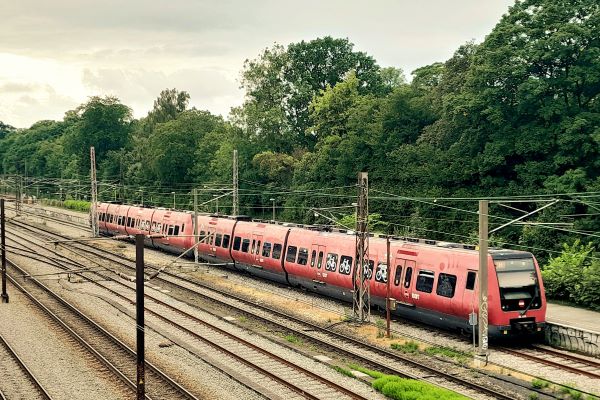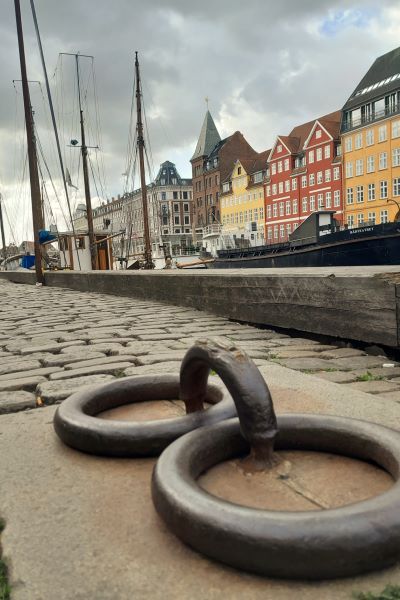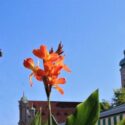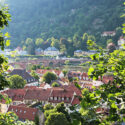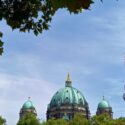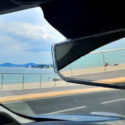Osterport is only a couple of stops away from the Copenhagen central train station. It is so short you could walk it. This is a perfect calm area for the business traveler looking for focus and with some possible outings nearby.
Just next to the station is the park Østre Anlæg (Eastern Plant). Loop around this green haven that stretches from Osterport and southwest. The loop to Strøget and around the park Østre Anlæg is a healthy walk and can be combined with museums, local food, and sights. The walk through the park will also lead you past the museum Statens Museum for Kunst (SMK) which has a fine set of permanent exhibitions, European art (1300-1800), French art (1900-1930), and of course Danish and Nordicartbetween 1750-1900.
Fun tours around Copenhagen
You will reach the museum at the southwestern tip of the park. While you are there, step in for a one or two-hour visit, the latter is recommended to fully take in the 700 years worth of art. When you have taken in the sights and maybe also visited the museum’s cafe to energize, step out on Solvgade Street and walk southeast, skirting Kongens Have (The King’s Garden). Now is the time to become better acquainted with the architecture of Copenhagen of centuries past. Take a left on Rigensgade and walk north. You are walking towards Nyboder, long rows of very particular 17th and 18th-century yellow low houses. Back in time, these were used for naval accommodation, and they remain a characteristic feature of the cityscape.
Visit Nyhavn for boat spotting
If you want to go for a longer walk, then you can tuck in a visit to the Nyhavn pier. You can reach it by following the O2 road that leads you from the northern part of the Østre Anlæg park, and skirts Kastellet (the 17th-century fortress) before turning to the south. Nyhavn is only about 1,5 kilometers away and perfectly suitable for a morning or afternoon stroll. When there, try Smørrebrød (heavy dark bread with various spreads) in one of the many restaurants that line the pier. Take for instance Nyhavns Færgekro (Nyhavn 5, 1051 København). To get some peace, show up well before noon, or after 10:00 to make sure that the restaurants are open. You can choose to sit inside or outside if the weather permits.
Try the local Akvavit that is distilled by the owner of the restaurant. I speak to an Brazilian waitress in one of the touristy restaurants along Nyhavhn.
Akvavit, I wonder, when do Danes drink that? “Anytime!” she answers with a laugh before she pours me a glass to the brim. She mentions how she and her friends will only need one glass before heading out to town to party. I take. a bite out of my smørrebrod and glance over towards the breakfast buffet. Fish, herring mainly in a variety of sauces. But it's too early n the day for me to have pungent herring. Then I take a sip of the small glass of Akvavit, and it burns, it burns! My vision is jolted and I quickly grasp for the glass of sparkling water. The Argentinian waitress notices my shock and smiles. How strong is this stuff? “50-60% alcohol,” she says with a laugh. But that means I could clean wounds with this, or sanitize tables with it, I quip, and we both laugh.
Smørrebrød = Bread and butter? It is so much more
Ibens Smørrebrød has only been around for three years, but word is spreading across the globe. It is drawing people from near and far who want to feast on the Danish open sandwich (smørrebrød). The name only means bread with butter. But it is so much more. It is always made with sourdough rye bread and a variety of toppings can be had, such as cheese, fish, meat, or seafood.
Fine dining to conclude your stay
Savor the freshly minted memories from the calm neighborhood of Osterport with a dinner in a fine restaurant just a few hundred meters away from the station. Dag H is conveniently placed on a corner by Dag Hammarskjöld’s Allé. As a marketed eatery, it’s a place to eat lunch or dinner, casual or more fine dining for the wanting.
On your way back to the central train station, take a short break in the Scottish pub, aptly named The Scottish Pub at Rådhusplatsen 16, just by the city’s main square. I strike up a conversation with the bartender, who mentions “A bit less tartan colors, and we could be an Irish pub”, and looking at the seat patterns I can see what he means. I order the only Scottish beer on draft, Punk, an IPA, served in a glass with bold white type spelling out Carlsberg, because why the heck not? It's a fine brew, sort of subdued, and I believe a hint of sweetness that closely resembles the EU and all it stands for. An IPA worthy of tartan colors on the bottle.
